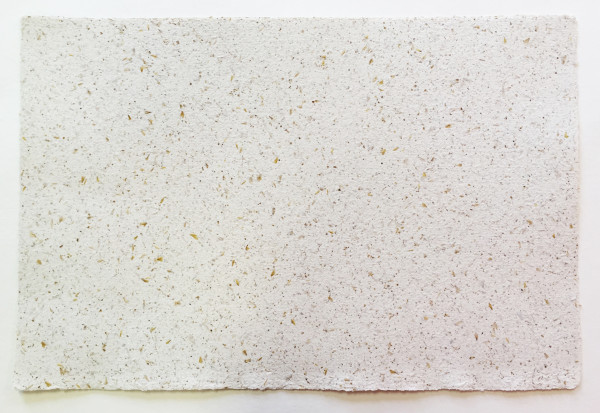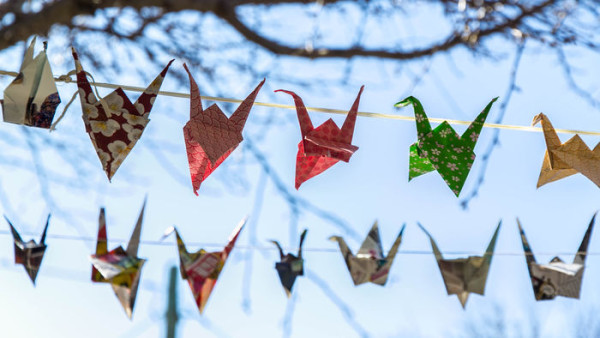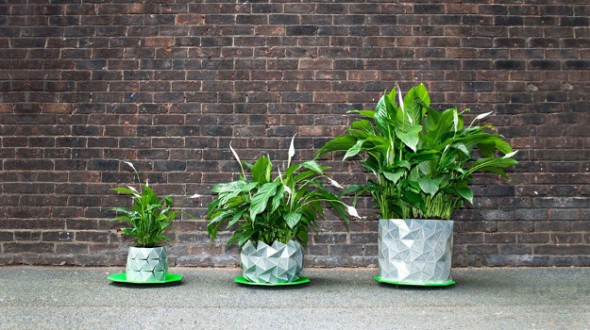Cranes Not Bombs
The Sunday Paper #67
Paper of the Week: Brew Paper

Adding items (often referred to as inclusions) to the papermaking vat is one of the simplest ways to make unique and intriguing papers. I was recently approached by a brewery to make a prototype paper with brewery waste. They sent me a bag full of wet spent grain, which I processed lightly in a blender and mixed with pulp made of cotton linter.
You can toss almost anything that floats into your vat of pulp just before making paper. Decorative elements should be small and lightweight so they don’t sink to the bottom of the vat; they should also be flat so they don’t cause problems when pressing.
I’ve seen papers made with inclusions like flower petals, coffee grounds, shredded money and confetti.
What sorts of inclusions have you added to your papers?
————————————————————————————————————––––––––––––
In the Studio:
I’m delighted to have Sandie Brayman as my assistant in the studio for the summer (and then some). She’s been a tremendous help, and one of our projects has been making short videos about various aspects in the papermaking process. She recently shot this 1.5 minute clip of me making a sheet of watermarked paper with denim pulp.
————————————————————————————————————––––––––––––
I’ve read several articles this week about communities making paper cranes on the anniversary of the dropping of the atomic bombs in Japan. After World War II ended, folded origami cranes evolved into a symbol for hope and peace through the story of Sadako Sasaki, who was exposed to radiation as an infant in the bombing of Hiroshima. Diagnosed with leukemia by age 12, she decided to fold 1,000 cranes for her wish to live and got to 644 cranes before she passed away. Her classmates finished the rest and buried her with a 1,000 crane wreath.
I was particular struck by a group in Lewisburg, Pennsylvania, who made cranes out of cut-up road maps, which organizer Nancy Cleaver said represent “The idea of connectedness to everywhere.” Their cranes are a part of a larger projct entitled “70,000 Cranes for Peace,” a worldwide campaign to commemorate the atomic bombings of Hiroshima and Nagasaki. Today marks the 70th anniversary of our dropping of the bomb on Nagasaki.
Here’s another origami-inspired product (i.e. the prototype was surely paper, but the real thing isn’t). Check out Growth, a pot that grows with your plant – no transplanting required.
Michelle Wilson recently completed a Small Plates residency at the San Francisco Center for the Book.
During that time, she completed The Last Color, this sweet little sculptural artists’ book about the color blue.
Forget the GPS! This paper cut city map by Lithuanian artist Virgilijus Trakimavicius is gorgeous enough to justify getting lost on the streets of Paris.
Listen to this radio interview by Rob Kelly, a paper engineer from Delaware who recently had an exhibition titled Midway, alluding to the space between science and art in which he works as well as the arcade influences from a carnival midway. Kelly is inspired by movement and incorporates elements of amusement, surprise, and entertainment into his work.
————————————————————————————————————––––––––––––
 If you enjoyed reading The Sunday Paper today, why not sign up to get it delivered to your in-box each and every Sunday? Click here to subscribe (it’s free), and you’ll receive my nifty pop-up alphabet template as a thank you gift!
If you enjoyed reading The Sunday Paper today, why not sign up to get it delivered to your in-box each and every Sunday? Click here to subscribe (it’s free), and you’ll receive my nifty pop-up alphabet template as a thank you gift!
If you read this blog regularly, would you consider making a donation to support the research, writing, design and delivery of The Sunday Paper? Click on that cute paper button (I made that paper) to see how you can provide support.
And if you run a paper-related business, you might be interested in promoting your business in The Sunday Paper.
Thank you to those who have pledged your support, and enjoy your Sunday!





1 Comment
Some of the prettiest paper I have made was on a papermaking course. One of the other participants had dyed some fabric on a course the previous summer and brought her samples. We took the tiny samples apart and had a bunch of brightly coloured 1 inch (ish) threads that we added to a pulp of bleached abaca. I haven’t tried since, but maybe I should see if I can find som coloured thread lying around.